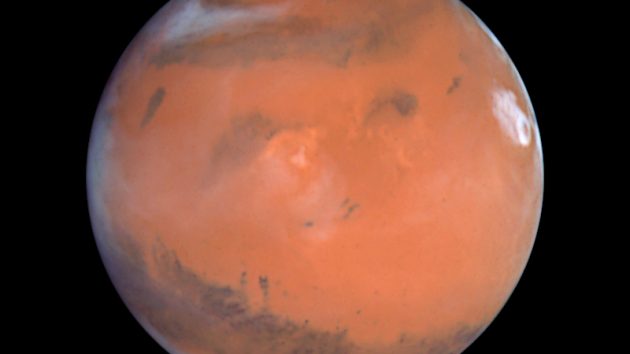Wann sind Menschen auf dem Mars?
Wann sind wir auf dem Mars? Kein Mensch weiß es genau. Vielleicht in 10 Jahren, vielleicht erst in 50. Irgendwann aber, das ist sicher, wird ein Mensch dort sein.
Der New Yorker publizierte vor ein paar Tagen einen Artikel, der sich ausgiebig mit der Frage befasst, wann denn nun endlich Menschen auf dem Mars landen.
It’s true that even a journey of thirty-five million miles has to start somewhere. Still, a reasonable person might ask: Where are we headed? Is it really to Mars? Or is it just to Kazakhstan?
Denn auch wenn die NASA seit 1972 – auch wegen des stetig fallenden Budgets für solche Sachen – keinen Amerikaner mehr weiter raus als bis zu zu den diversen Forschungsstationen im Erdorbit geschickt hat: Spekulationen und Pläne gibt es viele. Gerade auch, weil die Raumfahrt zunehmendend privatisiert wird.
But NASA is no longer the only game in town. Impey is excited by the rash of privately owned firms that are getting into the space business. He cites the “audacious” plans of a Dutch entrepreneur named Bas Lansdorp, who’s been marketing one-way trips to Mars on the Web. Lansdorp, he says, “plans to finance his venture by turning it into a reality TV epic—think Survivor meets The Truman Show meets The Martian Chronicles.” Other commercial ventures include Jeff Bezos’s Blue Origin, Richard Branson’s Virgin Galactic, and Eric Anderson’s Space Adventures. Space Adventures has already carved a niche for itself by negotiating visits to the I.S.S. for well-heeled amateurs. (Most recently, the company “arranged” a visit for the British soprano Sarah Brightman, at a cost of fifty-two million dollars; the singer has now postponed her trip, however, and it seems that a Japanese entrepreneur, Satoshi Takamatsu, will go in her stead.) “After years in the doldrums, space is heating up,” Impey writes.
Wann sind wir also auf dem Mars? Kein Mensch weiß es genau. Vielleicht in 10 Jahren, vielleicht erst in 50. Irgendwann aber, das ist sicher, wird ein Mensch dort sein. Und es wird eine klassische, amerikanische Erzählung sein.
The first pioneers on Mars, not unlike the American frontiersmen, will have to struggle to survive. Just to have drinking water, they’ll need to plow up the planet’s soil—known as regolith—melt down its ice, and distill the results. To breathe, they’ll have to separate the water into hydrogen and oxygen, then mix the oxygen with an inert gas—argon, perhaps—which they’ll get from, well, somewhere. Eventually, Petranek imagines a shift in the balance. Instead of adjusting to life on Mars, humans will adjust Mars to their needs. They will reëngineer the atmosphere and warm the planet. As the regolith thaws, ancient streams will flow again and life will flourish along their ruddy banks. More and more people will be drawn to Mars, until there will be whole cities of them.
Bildquellen
- Mars and Elysium: NASA


 Jan Fischer
Jan Fischer